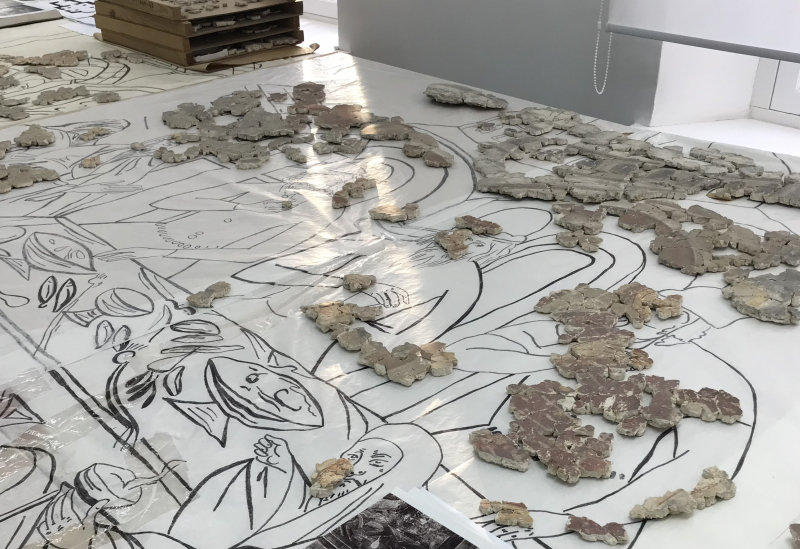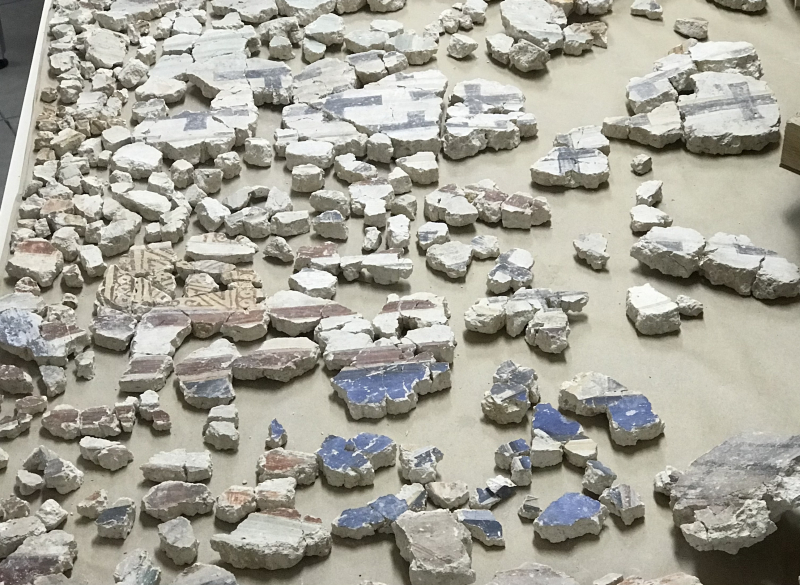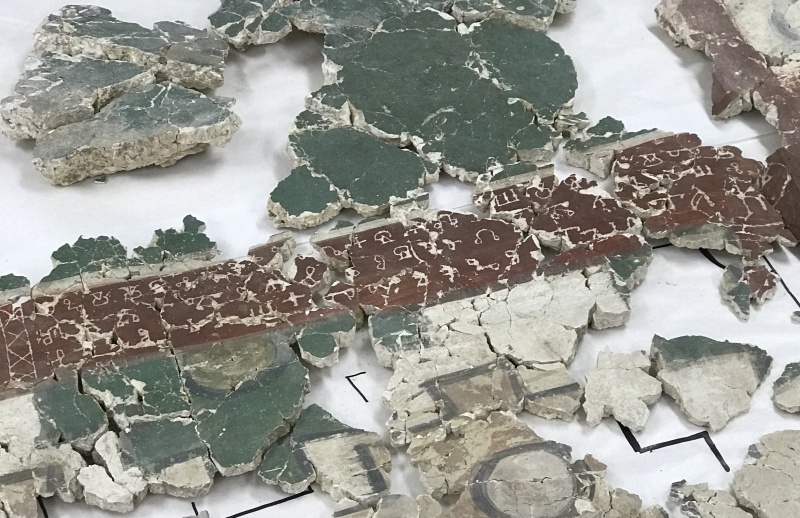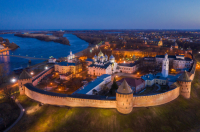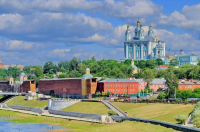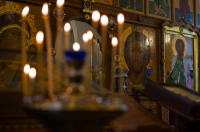If you’ve ever been to an Orthodox church, you know that among its common attributes are icons and crucifixions. However, in ancient times (say, the 11-12th centuries), these objects might have actually been less prevalent than murals, which in some churches covered whole walls.
These murals, or frescoes, would depict saints, angels, and the Holy Trinity, or illustrate Christian parables. Naturally, this was much more than just a decorative element of architecture – such murals allowed the church building to be “read” like a book, letting visitors learn about the various biblical stories and visualize them. After all, books, especially illustrated ones, were an expensive rarity that not everyone could afford, whereas everyone could visit a church.
Frescoes were applied onto a wet surface, which meant that the job had to be done quickly and confidently. Russian painters of old used natural earth and mineral pigments to achieve soft yellow, brown, and red colors. Typically, numerous specialists were involved in the creation of frescoes for churches; quite often, they were invited masters from Greece.
Many ancient wonders, including churches, were destroyed in the 13th century, during the Mongol invasion, as well as in modern times during the Second World War. However, some survive to this day and, amazingly, can still give us a glimpse of the worldview that existed around a thousand years ago.
Where to see
Pskov and Veliky Novgorod, two ancient cities located in Northwest Russia, are the only places in what was once Kievan Rus’ that weren’t pillaged by Mongols in the 13th century. Therefore, they are among the best places to visit if you want to see these unique – both in terms of art and religion – objects.
In Pskov, you should first and foremost see the Mirozhsky Monastery (included in the UNESCO World Heritage list). A part of its ensemble – the Transfiguration Cathedral – was painted with magnificent frescoes from top to bottom in the 12th century by unknown Greek masters. Other ancient frescos can be found in the Snetogorsky Monastery (14th century) and the Church of the Assumption (15th century; under restoration) in Meletovo, the Pskov Oblast.
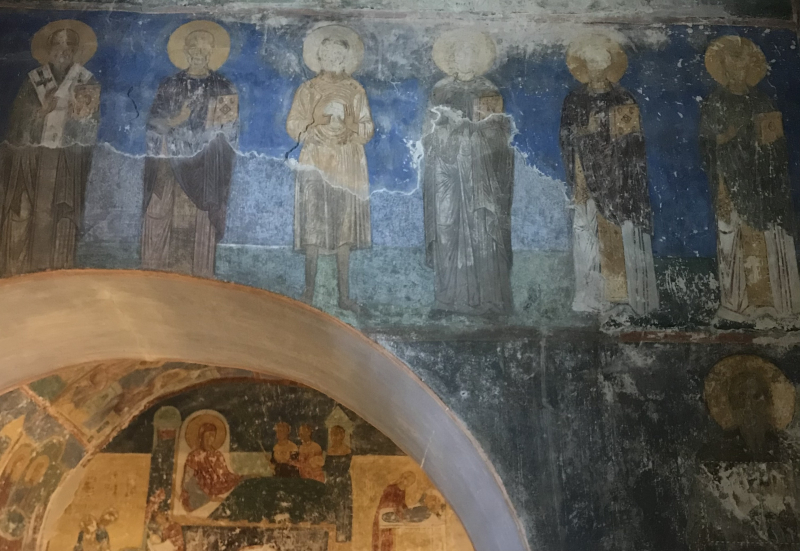
Mirozhsky Monastery, Pskov. Photo courtesy of the author
A unique collection of 14th-century Pskov frescoes is preserved in the Hermitage Museum’s collection, but is unfortunately unavailable to the public. The thing is, these frescoes were found during excavations in central Pskov: they used to line the walls of the many churches located right under the Pskov Kremlin walls. In 1701, Peter the Great gave an order to cover them with soil to use as battlements during the Great Northern War with Sweden. The destruction of churches has, surprisingly, helped preserve their frescoes.
The fate of the Novgorod frescoes has also been extremely difficult: the city was heavily bombed during the Second World War and most of its ancient churches and monasteries were destroyed. The work on their restoration continues to this day. For example, the walls of St. George’s Cathedral (located at the Yuriev Monastery) are now covered with late-19th-century frescoes, but only a couple of years ago, the archeologists found fragments of the church’s original 12th-century frescoes beneath the floor and are now studying them in an attempt to put them back together.
You can learn more about the restoration process at the Grekovy's Restoration Workshop and the Restoration Center of Monumental Painting, both of which offer guided tours.
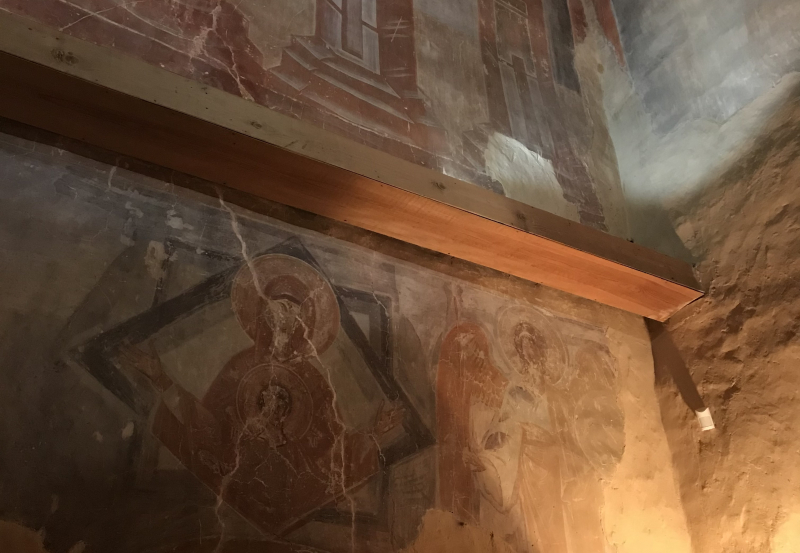
Church of the Transfiguration of the Savior, Veliky Novgorod. Photo courtesy of the author
As for the frescoes that are already on display, you can find them in many churches of Novgorod, such as the Church of the Transfiguration of the Savior (frescoed by Theophanes the Greek, one of the most prominent icon painters of the time, in 1378), Znamensky Cathedral (18th-century frescoes), and the Church of St. Simeon the God-Receiver (originally frescoed in the 15th century and updated several times over the centuries).
We hope that this brief introduction into the history of Russian frescoes will inspire you to visit one of these churches and see their beauty for youself!
